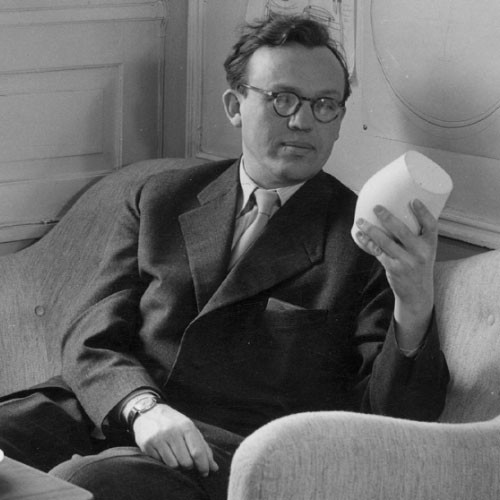Challenging conventional notions of how a shelf should look, Finn Juhl created an organic, almost sculptural piece that stands alone as a piece of art in its own right. Neatly proportioned, multiple shelves can be combined together to create a beautiful arrangement, enhancing a space’s function while simultaneously adding a decorative element.
Juhl’s background in architecture led him to create holistic spaces, where every element contributes to creating a cohesive space. The shelf was initially developed in 1949 for a Danish ‘winter garden’, and returns from the archives of House of Finn Juhl some 75 years later.

Finn Juhl was born on the 30th January 1912 in Frederiksberg, Denmark.
Although trained in architecture, it was his modern furniture designs that made him an international name. His first pieces of furniture were designed for his own apartment and were manufactured by the young Danish carpenter, Niels Vodder.
In 1946 Juhl got his first major interior assignment at Bing and Grøndahl’s store at Amagertorv in Copenhagen. This later became one of his main works and was awarded with the Eckersberg Medal in 1947. Soon after, he was given the opportunity to help furnish the new headquarters of the United Nations in NY - something which established his name with the American audience.
He is most famous today for his iconic furniture designs including The Chieftan Chair and The 108 Chair which are now produced by the House of Finn Juhl.













